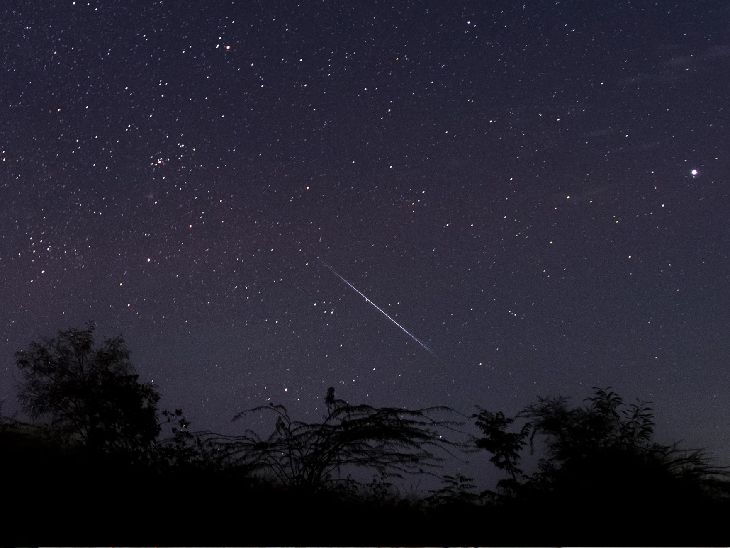
Geminids Meteor Shower: Renowned as one of the most captivating meteor showers annually, the Geminids derive their name from the Gemini constellation, the apparent point of origin.
Geminids Meteor Shower 2023: This December 14-15, the Geminids meteor shower reaches its peak, promising a spectacle of up to 150 meteors per hour visible in the night sky of India. Recognized as one of the most captivating meteor showers annually, the Geminids derive their name from the Gemini constellation, serving as the radiant point.
Distinguished from typical meteor showers associated with comets, the Geminids have a unique connection with an asteroid known as 3200 Phaethon. This asteroid’s debris gives rise to the Geminids meteor shower each December, sparking debates among astronomers about its origin. While some argue it is a comet based on its orbit and similarity to Pallas, others contend it is an asteroid based on the limited material it releases.
Noteworthy is the distinctive greenish hue of the Geminids, a characteristic setting them apart from other colorless or white meteors. Bill Cooke, lead for the Meteoroid Environment Office at NASA’s Marshall Space Flight Center, explains that the meteor’s green color results from the combustion of elements like oxygen, magnesium, and nickel in Earth’s atmosphere.
On the night of December 14, a waning gibbous Moon will partially illuminate the sky, potentially limiting visibility to 30-40 meteors per hour during the peak in the Northern Hemisphere. The Waning Gibbous Moon, or Half Moon, occurs when exactly 50% of the lunar surface is illuminated by the Sun’s rays.”
Further Insights into 3200 Phaethon and the Geminids Meteor Shower
Discovered on October 11, 1983, through the Infrared Astronomical Satellite, Asteroid 3200 Phaethon plays a unique role in astronomy. Annually, Earth traverses through Phaethon’s trail of debris, resulting in the mesmerizing Geminids shower.
Distinguished as the first asteroid linked to a meteor shower, Phaethon lacks the icy shell typical of comets. Despite this, some experts suggest that Phaethon might be a dormant comet, having shed its icy covering over time. Termed a ‘rock comet’ by certain astronomers, Phaethon’s close proximity to the Sun during its orbit leads to intense heating, causing it to crack and generate debris and dust.
Despite the Geminids hurtling through space at speeds exceeding 125,528 kilometers per hour, approximately 40 times faster than a speeding bullet, the likelihood of meteors reaching the Earth’s surface is minimal. Most meteors disintegrate at altitudes ranging from 72 to 89 kilometers.”
